-
 Bitcoin
Bitcoin $114400
0.68% -
 Ethereum
Ethereum $3550
2.48% -
 XRP
XRP $3.001
4.99% -
 Tether USDt
Tether USDt $0.9999
0.01% -
 BNB
BNB $757.6
1.46% -
 Solana
Solana $162.9
1.07% -
 USDC
USDC $0.9998
0.00% -
 TRON
TRON $0.3294
0.91% -
 Dogecoin
Dogecoin $0.2015
2.46% -
 Cardano
Cardano $0.7379
2.01% -
 Stellar
Stellar $0.4141
8.83% -
 Hyperliquid
Hyperliquid $37.83
-1.91% -
 Sui
Sui $3.454
0.76% -
 Chainlink
Chainlink $16.62
3.53% -
 Bitcoin Cash
Bitcoin Cash $554.6
2.84% -
 Hedera
Hedera $0.2486
3.91% -
 Ethena USDe
Ethena USDe $1.001
0.00% -
 Avalanche
Avalanche $21.95
3.34% -
 Toncoin
Toncoin $3.563
-2.85% -
 Litecoin
Litecoin $112.7
2.65% -
 UNUS SED LEO
UNUS SED LEO $8.977
0.13% -
 Shiba Inu
Shiba Inu $0.00001232
1.85% -
 Uniswap
Uniswap $9.319
2.93% -
 Polkadot
Polkadot $3.632
1.38% -
 Monero
Monero $307.2
2.36% -
 Dai
Dai $0.9997
-0.03% -
 Bitget Token
Bitget Token $4.340
0.91% -
 Pepe
Pepe $0.00001048
1.07% -
 Cronos
Cronos $0.1348
3.26% -
 Aave
Aave $261.5
1.93%
What is the relationship between the scarcity and price of NFTs?
NFT prices hinge on scarcity, mirroring supply and demand. Limited supply boosts potential value, but perceived scarcity from hype or marketing also significantly impacts price. Utility and underlying assets further influence value, with real-world applications commanding higher prices.
Mar 06, 2025 at 03:30 pm
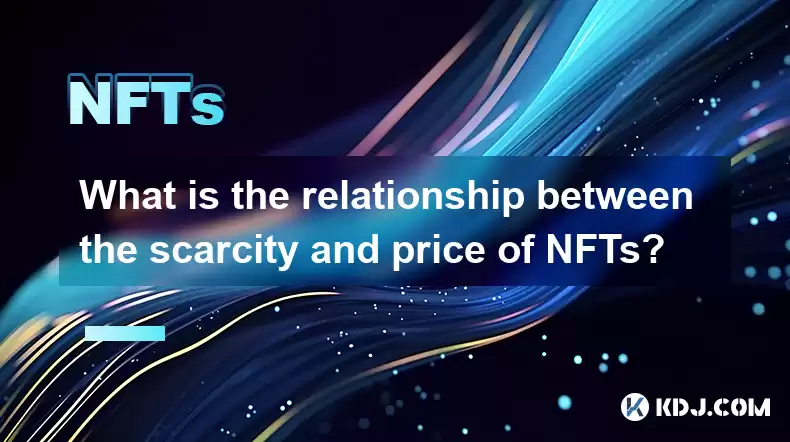
Key Points:
- NFTs derive value from their scarcity, mirroring the principles of supply and demand. Limited supply inherently increases potential value.
- Perceived scarcity, driven by marketing or community hype, can also significantly impact NFT price.
- Utility and underlying asset influence scarcity and price. NFTs with real-world applications command higher prices.
- The secondary market and trading volume play a crucial role in shaping perceived scarcity and influencing price.
- Technological factors like minting processes and smart contract limitations affect the actual scarcity of NFTs.
What is the relationship between the scarcity and price of NFTs?
The relationship between scarcity and the price of Non-Fungible Tokens (NFTs) is fundamental to their value proposition. Like any collectible item, the rarer an NFT is, the higher its potential price. This principle directly mirrors the economic laws of supply and demand. A limited supply of a desirable NFT inevitably leads to increased competition among buyers, driving up the price.
The scarcity of an NFT isn't solely determined by the number of units created. Perceived scarcity, fueled by marketing campaigns, community hype, and exclusivity, plays a crucial role in driving prices. An NFT might not be truly rare in terms of its total supply, but if the perception is that it's scarce, its price can inflate significantly. This is often seen with NFTs associated with popular projects or influential creators.
Beyond the numerical scarcity, the utility of an NFT significantly influences its price. NFTs that offer real-world applications, such as access to exclusive events, memberships, or digital assets, are often perceived as more valuable, even if their supply is relatively large. The underlying asset or intellectual property associated with the NFT also plays a crucial role in determining its perceived scarcity and hence its price. A digital artwork by a renowned artist will naturally command a higher price than a less established artist's work, even if both have a similar supply.
The secondary market and trading volume heavily impact the perceived scarcity and price of an NFT. High trading volume suggests strong demand, further enhancing the perception of scarcity and driving prices upward. Conversely, low trading volume can indicate a lack of interest, potentially leading to a price decrease. The activity and liquidity within the NFT market directly reflect and shape the value of individual NFTs.
Technological factors also influence the actual scarcity of NFTs. The minting process itself can introduce limitations on the supply. Smart contracts governing the creation and distribution of NFTs can incorporate mechanisms to control scarcity, such as limiting the number of mintable tokens or introducing timed releases. These technological constraints create a verifiable and transparent scarcity, which further bolsters the value proposition of the NFT.
Understanding the role of supply in NFT valuation
The supply of an NFT collection is a key factor in determining its potential value. Projects often employ various strategies to control supply, such as fixed collections with a pre-determined number of NFTs, or dynamic collections where the supply is influenced by various factors. The supply is usually established at the time of minting.
- Fixed Supply: This is the most common approach, where a specific number of NFTs are created, and no more will ever be minted. This creates a sense of exclusivity and often leads to higher value.
- Dynamic Supply: Some projects utilize dynamic supply models where the number of NFTs minted can change based on certain criteria, such as community engagement or market demand. This can create uncertainty and affect price volatility.
The influence of demand on NFT pricing
Demand for NFTs is driven by a combination of factors including:
- Utility: NFTs with real-world applications, such as access to exclusive content or communities, are more desirable.
- Community: A strong and engaged community around a project can significantly increase demand.
- Artist Recognition: NFTs associated with well-known artists or brands often command higher prices due to their established reputation.
- Hype: Market speculation and hype can temporarily inflate demand and price.
How secondary markets affect NFT scarcity and price
The secondary market is where NFTs are traded after their initial sale. This market plays a critical role in shaping the perceived scarcity and price of NFTs.
- Resale Value: The resale value of an NFT on secondary marketplaces reflects current market demand and can influence the price of similar NFTs.
- Liquidity: High liquidity in the secondary market implies that NFTs can be easily bought and sold, which can positively affect their price.
- Market Trends: Overall market trends and sentiment heavily influence the prices of NFTs on secondary markets.
Frequently Asked Questions:
Q: Can an NFT's price increase even if its supply isn't limited?
A: Yes, perceived scarcity and demand driven by factors like community engagement, artist recognition, or utility can increase an NFT's price regardless of the total supply.
Q: How does the minting process affect NFT scarcity?
A: The minting process determines the initial supply of an NFT. Limited minting creates scarcity, impacting the potential value.
Q: Does a high trading volume always mean a higher price?
A: Not necessarily. High trading volume can indicate strong demand, but it doesn't guarantee a price increase. The overall market sentiment and other factors also play a significant role.
Q: Can an NFT lose value if its perceived scarcity decreases?
A: Absolutely. If the demand falls or the perception of scarcity diminishes due to increased supply or lack of community engagement, the NFT's price can decrease significantly.
Q: How can I assess the true scarcity of an NFT?
A: Examining the project's whitepaper, understanding the minting process, and researching the total supply are crucial steps in determining the true scarcity of an NFT. Look for verifiable information, not just marketing claims.
Disclaimer:info@kdj.com
The information provided is not trading advice. kdj.com does not assume any responsibility for any investments made based on the information provided in this article. Cryptocurrencies are highly volatile and it is highly recommended that you invest with caution after thorough research!
If you believe that the content used on this website infringes your copyright, please contact us immediately (info@kdj.com) and we will delete it promptly.
- Cryptocurrency, Altcoins, and Profit Potential: Navigating the Wild West
- 2025-08-04 14:50:11
- Blue Gold & Crypto: Investing Disruption in Precious Metals
- 2025-08-04 14:30:11
- Japan, Metaplanet, and Bitcoin Acquisition: A New Era of Corporate Treasury?
- 2025-08-04 14:30:11
- Coinbase's Buy Rating & Bitcoin's Bold Future: A Canaccord Genuity Perspective
- 2025-08-04 14:50:11
- Coinbase's Buy Rating Maintained by Rosenblatt Securities: A Deep Dive
- 2025-08-04 14:55:11
- Cryptos, Strategic Choices, High Returns: Navigating the Meme Coin Mania
- 2025-08-04 14:55:11
Related knowledge
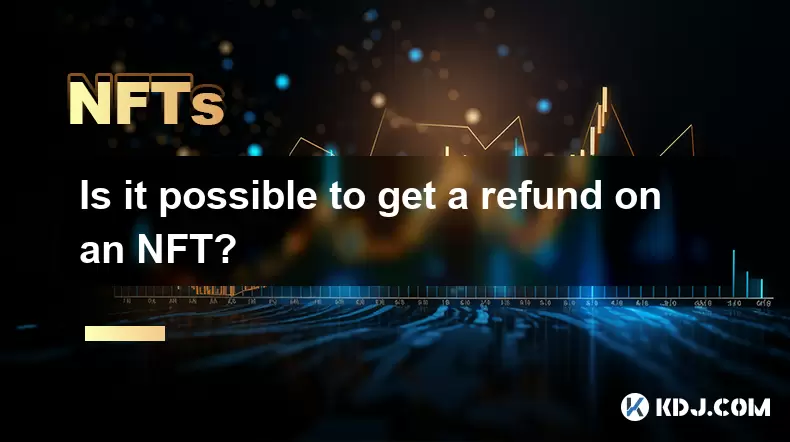
Is it possible to get a refund on an NFT?
Jul 21,2025 at 08:35pm
Understanding NFT Transactions and RefundsWhen you purchase an NFT (Non-Fungible Token), the transaction is typically recorded on a blockchain, making...
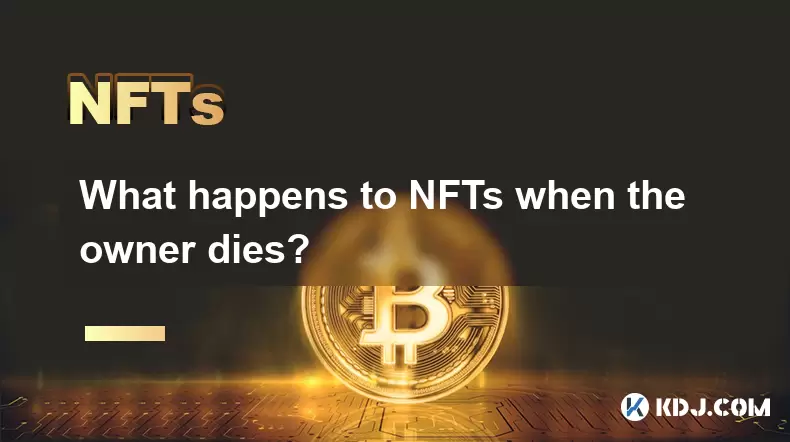
What happens to NFTs when the owner dies?
Jul 22,2025 at 02:43pm
Legal Ownership and Digital AssetsWhen an individual owns NFTs, the question of what happens to these assets upon their death is a pressing one. NFTs ...
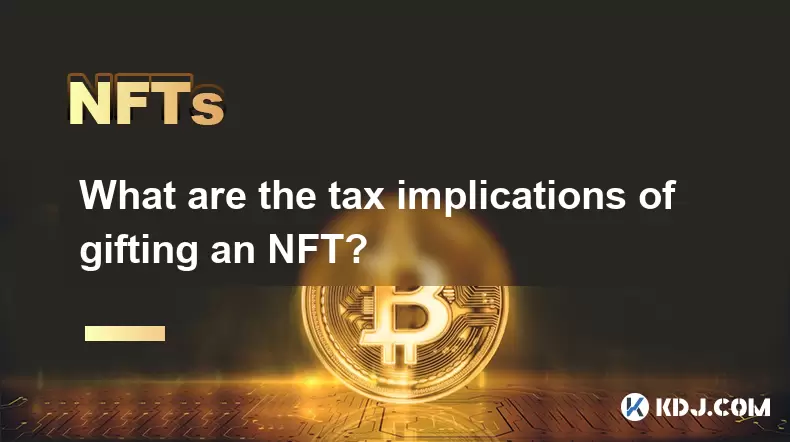
What are the tax implications of gifting an NFT?
Jul 19,2025 at 04:21am
Understanding the Basics of NFT GiftingGifting a Non-Fungible Token (NFT) involves transferring ownership from one individual to another without recei...
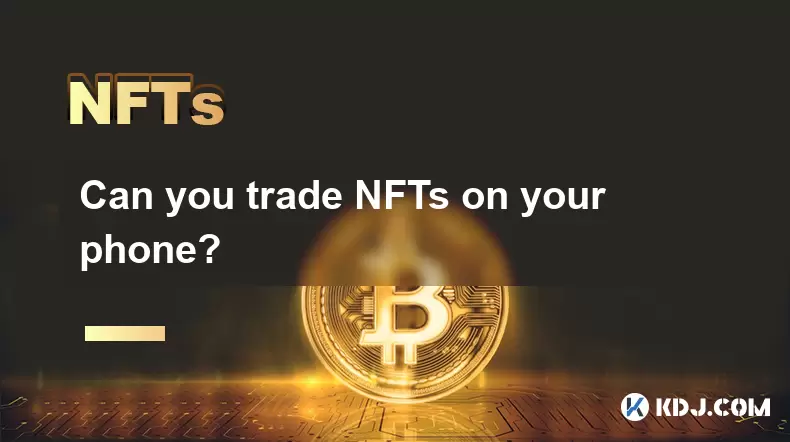
Can you trade NFTs on your phone?
Jul 18,2025 at 04:29am
Trading NFTs on Mobile DevicesYes, you can trade NFTs on your phone, and the process has become increasingly streamlined thanks to a variety of mobile...
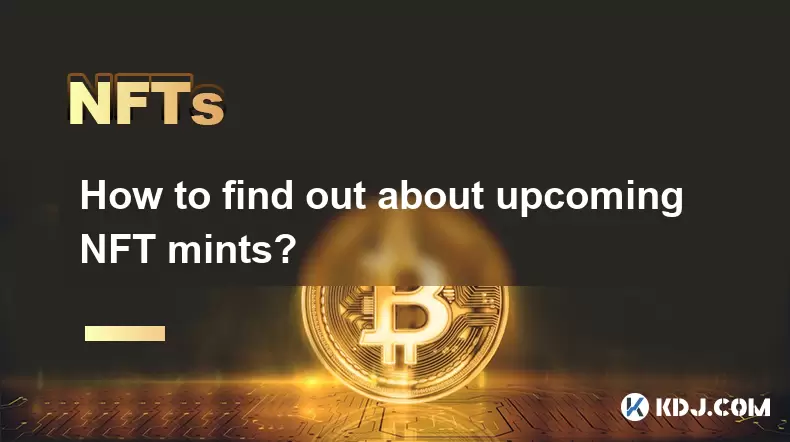
How to find out about upcoming NFT mints?
Jul 18,2025 at 11:50am
Exploring NFT Minting OpportunitiesUnderstanding the landscape of upcoming NFT mints is crucial for collectors, investors, and creators who wish to st...
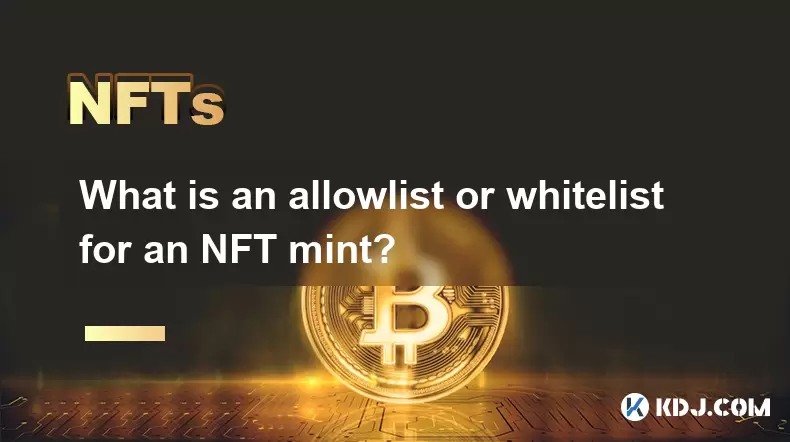
What is an allowlist or whitelist for an NFT mint?
Jul 20,2025 at 07:14pm
Understanding the Concept of an Allowlist for NFT MintingAn allowlist, also commonly referred to as a whitelist, is a mechanism used in the NFT mintin...

Is it possible to get a refund on an NFT?
Jul 21,2025 at 08:35pm
Understanding NFT Transactions and RefundsWhen you purchase an NFT (Non-Fungible Token), the transaction is typically recorded on a blockchain, making...

What happens to NFTs when the owner dies?
Jul 22,2025 at 02:43pm
Legal Ownership and Digital AssetsWhen an individual owns NFTs, the question of what happens to these assets upon their death is a pressing one. NFTs ...

What are the tax implications of gifting an NFT?
Jul 19,2025 at 04:21am
Understanding the Basics of NFT GiftingGifting a Non-Fungible Token (NFT) involves transferring ownership from one individual to another without recei...

Can you trade NFTs on your phone?
Jul 18,2025 at 04:29am
Trading NFTs on Mobile DevicesYes, you can trade NFTs on your phone, and the process has become increasingly streamlined thanks to a variety of mobile...

How to find out about upcoming NFT mints?
Jul 18,2025 at 11:50am
Exploring NFT Minting OpportunitiesUnderstanding the landscape of upcoming NFT mints is crucial for collectors, investors, and creators who wish to st...

What is an allowlist or whitelist for an NFT mint?
Jul 20,2025 at 07:14pm
Understanding the Concept of an Allowlist for NFT MintingAn allowlist, also commonly referred to as a whitelist, is a mechanism used in the NFT mintin...
See all articles

























































































